Chinese opera has many regional styles. One of the oldest that still has a living heritage is kun opera (崑劇), which emerged during the Ming Dynasty (from the 14th century to the 17th century) in southeast China. In 2001, it was proclaimed by UNESCO, along with the Noh theater of Japan and Kutiyattam Sanskrit theater of Southern India, as one of the Masterpieces of the Oral and Intangible Heritage of Humanity. This May, the main kun opera companies from China and the Lan Ting Kun Opera Troupe (蘭庭崑劇團) from Taiwan gathered in Beijing to celebrate not only the preservation of this unique art form, but its revival over the past decade.
Lan Ting was founded by Wang Chih-ping (王志萍) in 2005, and since its creation has been behind a number of highly influential productions of kun opera that have helped reinvigorate the art form and attract new, and more importantly, younger, audiences. These productions earned Lan Ting a place as the only kun troupe not from China to be invited to the 10th anniversary of the UNESCO listing.
In an interview with the Taipei Times last month, Wang said that Taiwan’s unique historical heritage was crucial to the preservation of kun opera and its revival.
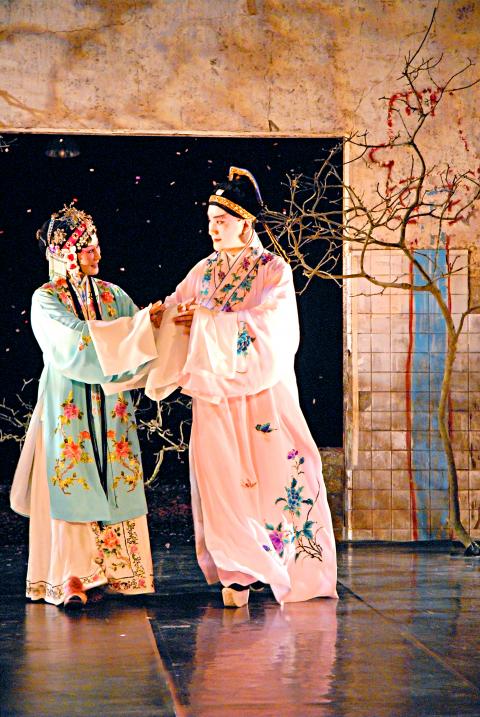
Photo Courtesy of Lan Ting Kun Opera Troupe
The political turmoil of China during the second half of the 20th century saw the destruction of much kun heritage, which through an irony of history was preserved and maintained by scholars and artists who fled to Taiwan with the Chinese Nationalist Party (KMT) government. Although kun opera is now very much back in favor in China, with a total of seven national troupes performing regularly, Wang says that Taiwan still has a great deal to contribute.
“In the realm of Chinese heritage, Taiwan has a long and rich cultural tradition and refined aesthetic sensibility,” she wrote in a statement for the 10th anniversary gathering. “It has a role to play in the preservation and expression of traditional Chinese culture. The development of kun opera in Taiwan dates back more than 60 years, and even in these difficult times [for the traditional arts], people in Taiwan continue to promote kun opera, and Taiwan has established itself as one of the best places in the Chinese-speaking world for the continued appreciation of this art form.”
According to Wang, the kun opera tradition in China has shifted from talented amateurs, whose skills and creativity were applauded in the salons of the literati, to professional performance groups that put a premium on the transmission of technical skills from master to student. This has given rise to a phrase often heard in kun opera circles these days that “China has the best performers, but Taiwan has the best audiences.”
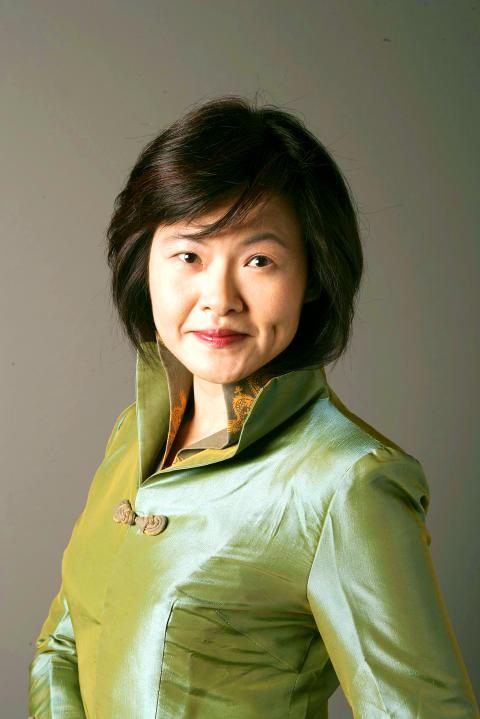
Photo Courtesy of Lan Ting Kun Opera Troupe
“We have kept the tradition alive,” Wang said. “However small the scale, the transmission through members of the literati has continued unbroken, even when kun all but disappeared. It remained alive in musical salons and student associations. [Wang is a history major who came to kun opera as a university student.] This tradition is making itself heard once again [in China], but it is this living tradition in Taiwan that has been so critical to its preservation [over the past half century]. We can’t let China take all the credit [for the revival of kun opera].”
Wang also believes that this living literati tradition in Taiwan is an indispensable key to kun’s future. “After all, kun developed as a pastime of the literati. These people might not be able to perform, but they were active in shaping the way kun operas were performed. Some wrote lyrics and music, others simply provided an aesthetic sensibility as producers ... In China, things are different. It is the performers who take the lead. Their level of cultural sophistication is not at the same standard. They might be able to perform at a very high level of technical excellence, but sometimes a full understanding is missing. Their ability to manipulate the material is limited by their background [as performers]. It is here that Taiwan can make its contribution.”
Wang delights in the reworking of kun classics mediated through a vital literati tradition of which she is a part. At the same time, she also strongly believes that the medium must also find a modern voice. “If you look at a classic like The Peony Pavilion [first performed in 1598], the author took a short story from the Song Dynasty [from the 10th century to the 13th century] and elaborated it into a huge operatic work,” Wang said. “He was rewriting for his own time and incorporating his own way of thinking. In representing his work, we too must also express ourselves. There is no point simply preserving it unchanged.”
Soon after it was established, Lan Ting released the “mini-opera” (小全本) The Lion’s Roar (獅吼記) in 2006. This was a reworking of a much larger opera, and managed to create a delightful comedy from an original that is marred by misogyny and a heavy-handed moral tone. Wang’s most ambitious work is arguably Quest for the Garden Saunter and the Interrupted Dream (尋找遊園驚夢) in 2007, which adapted the classic The Peony Pavilion (牡丹亭) for performance in the cavernous halls of the Huashan 1914 Creative Park (華山1914) through the use of techniques taken from experimental theater and installation art. It has since been successfully adapted for performance at other venues.
More recently, Lan Ting created a condensed 90-minute version of The Palace of Eternal Youth (長生殿) for the launch of the National Palace Museum’s New Melody (故宮新韻) series of theatrical performances, creating a new and versatile format for kun.
Two of the most successful and widely performed kun operas to date have been produced under the aegis of Kenneth Pai (白先勇), one of Taiwan’s foremost modernist authors and a passionate advocate of kun opera. His Peony Pavilion Youth Edition (青春版牡丹亭), which debuted in 2004, was a runaway success.
Productions by Wang and Pai are notable for their creative adaptation of traditional operas, providing a unified story within a time frame and within a context acceptable to contemporary audiences. Traditionally, a full opera could run for many hours, a notable example being the rare 1999 production of The Peony Pavilion hosted by the Lincoln Center for the Performing Arts in New York, which ran for 20 hours. In addition to the length of complete operas, kun opera has suffered a gradual decline since the 18th century because of the high level of technical knowledge it requires from audiences. The small circle in which the operas circulated through the 20th century and the rarity of full productions have contributed to the loss of much of the kun opera heritage, with many operas surviving only in incomplete versions.
For Wang, kun is too rich a source of culture to be abandoned. It is not only a remarkable art form in itself, but has also long been incorporated into the training of Beijing opera performers as a means of enriching their repertoire. “Kun has always put a premium on a nuanced expression of emotion, and this can assist Beijing opera performers in honing their expressive skills,” Wang said.
Wang says Taiwan has much to offer the renaissance of kun opera that is now taking place. “We have been the protector and supporter of kun over many decades. Now we are actively participating in its revival.”
People from Taiwan have played a critical part in many of the most important modern kun productions, a fact that Wang suggests is not only glossed over by China, but also by Taiwan’s cultural bureaucrats, some of whom are inclined to see kun as alien to this country’s cultural heritage.
Lan Ting will premiere Six Legends of Lan Ting — Part II (蘭庭六記︰系列二), a showcase of female role types in kun opera, on Oct. 9 and Oct. 10 at the Dadaocheng Theater (大稻埕戲苑), 9F, 21, Dihua St Sec 1, Taipei City (台北市迪化街一段21號9樓). This is a follow-up on its successful compendium of young male roles in 2008. Tickets will go on sale through NTCH ticketing on Aug. 15.
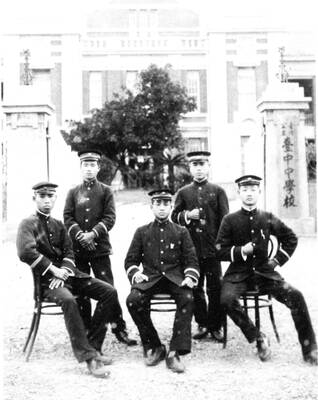
April 28 to May 4 During the Japanese colonial era, a city’s “first” high school typically served Japanese students, while Taiwanese attended the “second” high school. Only in Taichung was this reversed. That’s because when Taichung First High School opened its doors on May 1, 1915 to serve Taiwanese students who were previously barred from secondary education, it was the only high school in town. Former principal Hideo Azukisawa threatened to quit when the government in 1922 attempted to transfer the “first” designation to a new local high school for Japanese students, leading to this unusual situation. Prior to the Taichung First

The Ministry of Education last month proposed a nationwide ban on mobile devices in schools, aiming to curb concerns over student phone addiction. Under the revised regulation, which will take effect in August, teachers and schools will be required to collect mobile devices — including phones, laptops and wearables devices — for safekeeping during school hours, unless they are being used for educational purposes. For Chang Fong-ching (張鳳琴), the ban will have a positive impact. “It’s a good move,” says the professor in the department of
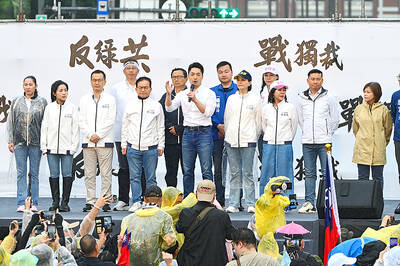
On April 17, Chinese Nationalist Party (KMT) Chairman Eric Chu (朱立倫) launched a bold campaign to revive and revitalize the KMT base by calling for an impromptu rally at the Taipei prosecutor’s offices to protest recent arrests of KMT recall campaigners over allegations of forgery and fraud involving signatures of dead voters. The protest had no time to apply for permits and was illegal, but that played into the sense of opposition grievance at alleged weaponization of the judiciary by the Democratic Progressive Party (DPP) to “annihilate” the opposition parties. Blamed for faltering recall campaigns and faced with a KMT chair
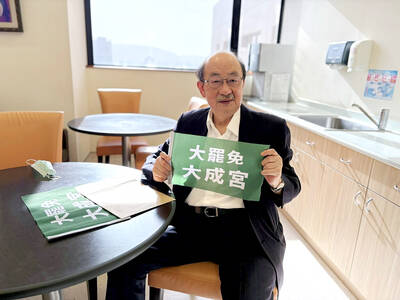
Article 2 of the Additional Articles of the Constitution of the Republic of China (中華民國憲法增修條文) stipulates that upon a vote of no confidence in the premier, the president can dissolve the legislature within 10 days. If the legislature is dissolved, a new legislative election must be held within 60 days, and the legislators’ terms will then be reckoned from that election. Two weeks ago Taipei Mayor Chiang Wan-an (蔣萬安) of the Chinese Nationalist Party (KMT) proposed that the legislature hold a vote of no confidence in the premier and dare the president to dissolve the legislature. The legislature is currently controlled